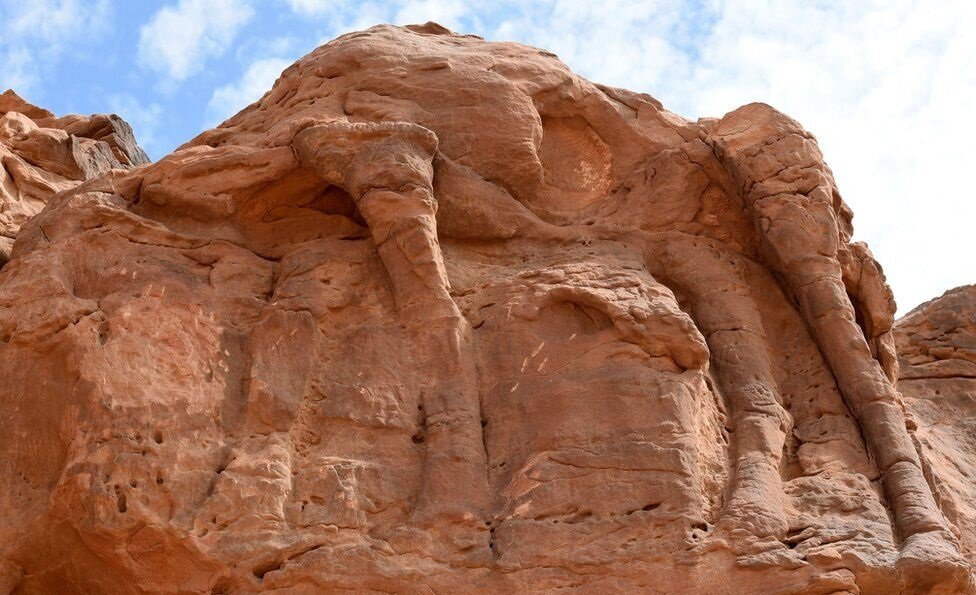Stunning relief carvings of camels in Saudi Arabia are now thought to date back more than 7,000 years – making them more than three times as old as was first suggested.
Previously, it was thought the ancient camel sculptures found in the northern province of Al Jouf were about 2,000 years old.
By using techniques such as analyzing tool marks and erosion, as well as radiocarbon dating associated artifacts, researchers have dated the reliefs at what is known as the Camel Site to the middle of the sixth millennium B.C.—some 5,000 years earlier than they had originally thought.
During the Neolithic period (ca. 8000–3000 B.C.), northern Arabia was much wetter than it is now, and nomads herded sheep, cattle, and goats and hunted abundant wildlife. Animals would have had a crucial role in the herders’ existence, which may help explain why they created the massive reliefs.

“They are absolutely stunning and, bearing in mind we see them now in a heavily eroded state with many panels fallen, the original site must’ve been absolutely mind blowing,” said Dr Maria Guagnin, from the department of archaeology at Germany’s Max Planck Institute for the Science of Human History, the lead author of a new study on the late Stone Age carvings.
“There were life-sized camels and equids two or three layers on top of each other. It must have been an absolutely stunning site in the Neolithic.”
Archaeologist Maria Guagnin explains that the site was clearly used for centuries, and possibly even millennia, and new reliefs were periodically added or old ones re-carved when details began to fade. “I wonder if the site was visited regularly, but reliefs were only added on special occasions,” she says. “Or was it only visited for special occasions, when new reliefs were added or existing ones repaired?”
Guagnin has no question, however, regarding the mastery displayed by the Neolithic artists, who worked high atop cliffs where they would never have been able to see the entire animal while carving it.
“The level of naturalism and detail is astonishing,” she says, “and the technical skill and community effort involved in the creation of these reliefs is evidence of the importance of rock art in the social and symbolic life of the Neolithic herders of northern Arabia.”
Sources
https://www.archaeology.org/issues/451-2201/features/10188-saudi-arabia-animal-carvings/

